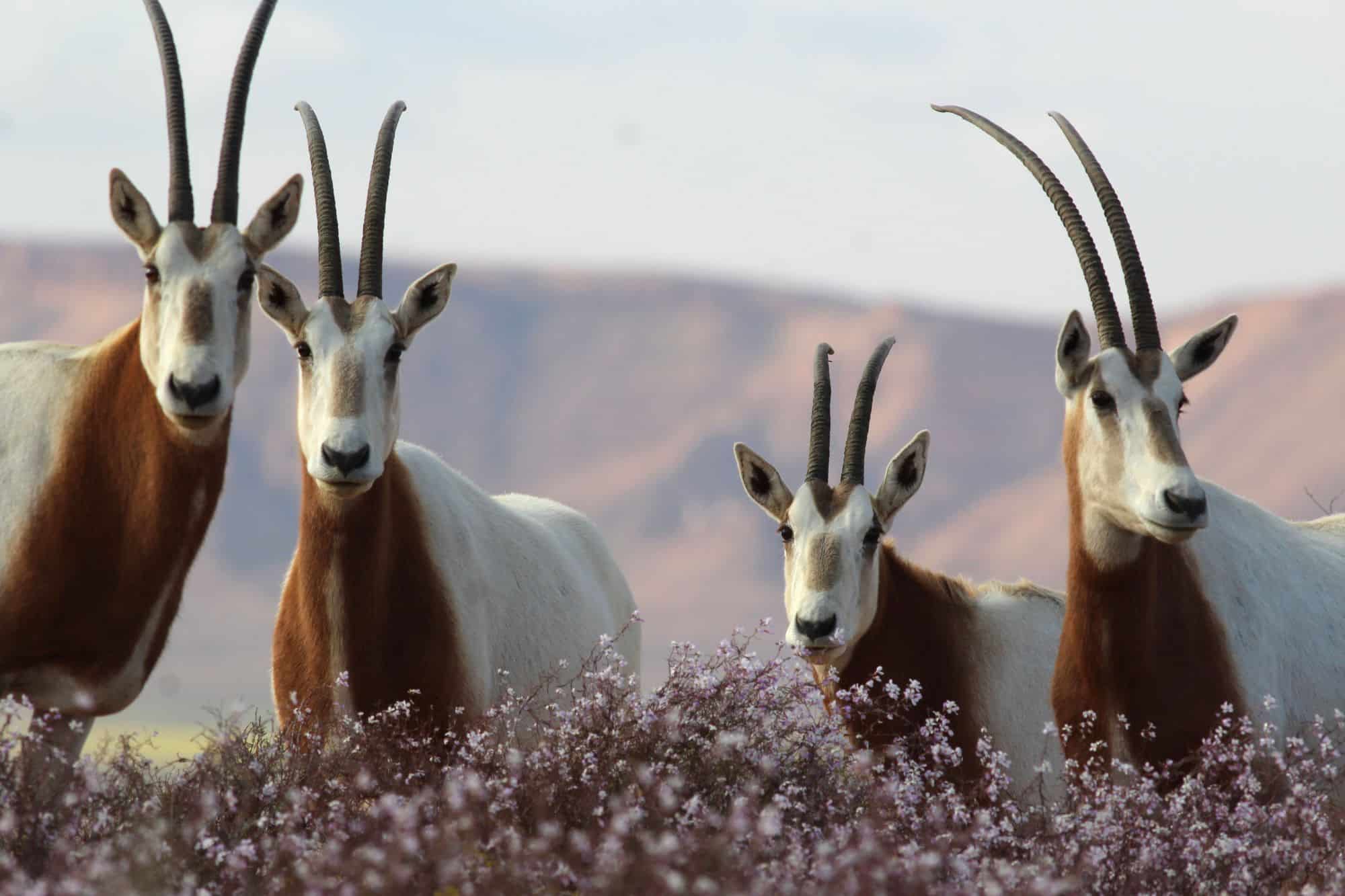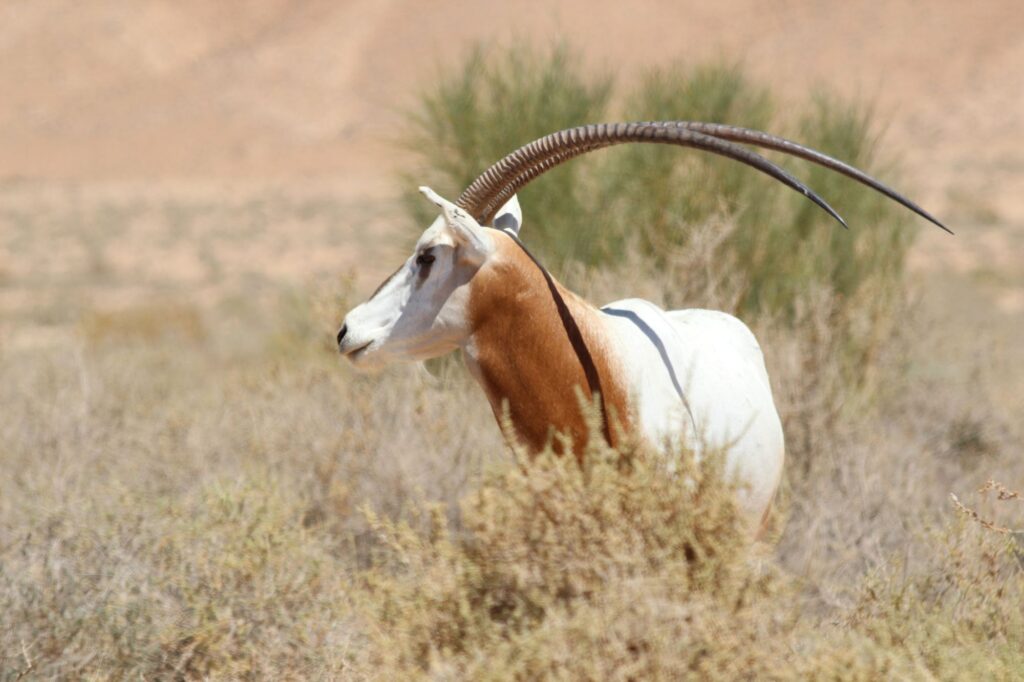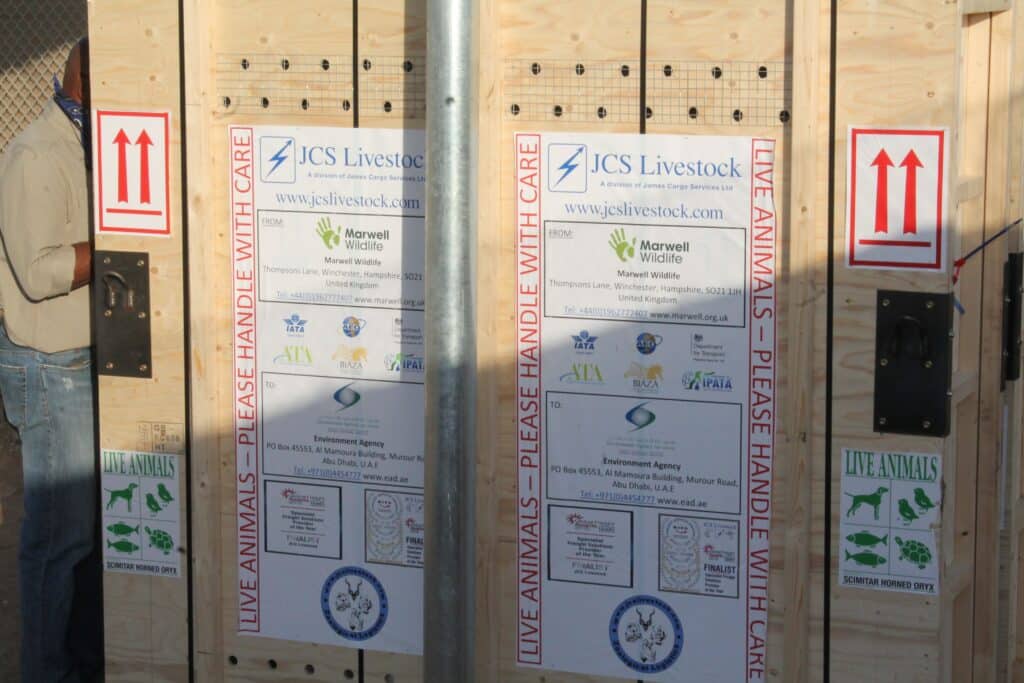Celebrating the first-ever Scimitar-Horned Oryx Day – a 50-year conservation story
August 19, 2025
August 19, 2025

By Sophie Whitemore, Marwell Wildlife Zoologist & International Studbook Keeper for the Scimitar-horned Oryx
On 16 August 2025, we’re celebrating the very first Scimitar-Horned Oryx Day, a new world awareness day voted for by the public in a competition run by the British and Irish Association of Zoos and Aquaria (BIAZA) last year.
Not only is this an iconic Marwell species, but it is one that represents what modern conservation zoos can achieve when working with international partners who are all committed to the long term recovery of a species.
Once widespread across North Africa, scimitar-horned oryx disappeared from the wild in the late 1980s or early 1990s due to over-hunting, competition with domestic livestock, and prolonged droughts. Thankfully, by this point, around 60 individuals had been brought into zoos across Europe and America. Had this not happened, sadly the species would have gone extinct altogether.
When we opened in 1972, we already had 17 oryx in our care, five males, and twelve females. Since then, we’ve welcomed a total of 435 scimitar-horned oryx and celebrated the birth of 379 calves. These animals have helped build populations in 41 other zoos globally, including locally at Whipsnade and Edinburgh zoos and further afield in Japan, Canada, and notably Australia too, where Marwell born animals went on to make up most of the founding population for the entire Australasian region.


I’m sure you won’t be surprised to hear that our work hasn’t just stayed within the zoo. Starting in the 1980s and 90s, Marwell supported early reintroductions to Tunisia, sending animals to Bou Hedma, Sidi Toui, and Dghoumes National Parks, where the species had been locally extinct for 80 years. By 2011, we had established a field team in Tunisia to provide continued support for local conservation efforts and long-term monitoring post-release. Even now, we continue to monitor the species across four sites in Tunisia, and with this we have helped restore key habitats and seen the return of other indigenous species.
Elsewhere, by 2012, plans were being discussed for a large-scale reintroduction to Chad, the species’ former stronghold before their extinction in the wild. Our involvement in those early releases to Tunisia helped guide these plans to restore the species in Chad. As coordinator of the EAZA Ex situ Programme (EEP) at the time, Dr Tania Gilbert our Head of Conservation Science, helped model release strategies, and when subsequent genetic analyses of the source population for the reintroduction showed that genetic diversity was low, Marwell assembled a diverse group of oryx from EEP zoos to join the ‘World Herd’ in the United Arab Emirates forming a genetically diverse source population for the project by the Environment Agency – Abu Dhabi, the Chad Government, and implemented on the ground by Sahara Conservation.


In 2023, Marwell (as host of the IUCN SSC Antelope Specialist Group) contributed to the species’ IUCN Red List reassessment, which saw a positive change in conservation status for the scimitar-horned oryx from Extinct in the Wild to Endangered. It might seem small on paper, but the change in status marks a huge milestone in the species’ recovery and the efforts of everyone who worked for decades to make it happen.
Our work didn’t stop when the animals left their crates. If anything, that was just the start. Since 1985, we’ve continued to work in Tunisia alongside our key partner, the Direction Générale des Forêts and other Tunisian and international partners, and local communities to restore ecosystems, not just for the oryx, but for the wider landscape too.
Thanks to the oryx’s high profile, we’ve been able to support conservation of other regional species like North African ostrich, dorcas gazelle, and slender-horned gazelle, along with the environment they are living in. It’s not just about a single species; it’s about protecting entire ecosystems.
While being classed as Endangered is a big step forward, there’s still a long way to go before we can say the scimitar-horned oryx has truly been restored across its range.
So, as we mark the first-ever Scimitar-Horned Oryx Day, we’re not just celebrating one remarkable species but we’re also recognising the decades of dedication, science, and teamwork that made its recovery possible. Here at Marwell, we’re incredibly proud to have been, and to continue to be, part of that journey.
We are a charity, dedicated to delivering hands-on conservation work and education throughout the UK and across the globe. Every visit, purchase and donation goes towards supporting the animals you love.